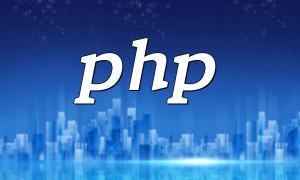In today's internet era, the LNMP (Linux, Nginx, MySQL, PHP) environment has become a key choice for building high-performance websites. This article focuses on how to configure and optimize PHP7 in the LNMP environment to improve website performance and response time, while following Google SEO best practices.
LNMP is a powerful network service architecture that combines the Linux operating system, Nginx server, MySQL database, and PHP scripting language. Whether for developing a new website or maintaining an existing one, LNMP offers stable and efficient services.
First, ensure that your LNMP environment is successfully set up. Then, use the package manager to install PHP7. Enter the following commands in the terminal:
The above commands will install PHP7.4 along with MySQL extension support.
Next, configure PHP7 to suit your needs. The PHP configuration file is typically located at
. Common optimization options include:OPcache is a caching mechanism for PHP that can significantly improve PHP code execution speed. To enable OPcache, make the following changes in the php.ini file:
These settings will cache the compiled PHP bytecode, thus reducing the time spent on repeated compilations.
PHP-FPM is a process manager for PHP that can handle many concurrent requests. Edit the pool configuration file, usually located at
, and adjust the following parameters based on your server's performance:While configuring and optimizing PHP7, it's also important to implement SEO techniques. Here are some important SEO tips:
Website speed is a crucial factor affecting SEO. By optimizing PHP configurations, using caching mechanisms, and compressing static resources, you can significantly improve website speed.
Ensure your website displays well on various devices. Responsive design not only enhances user experience but also has a positive impact on search engine optimization.
Enabling HTTPS can increase the security of your website, which is an important ranking factor for Google. You can easily enable SSL certificates through Nginx.
Configuring and optimizing PHP7 in the LNMP environment can significantly improve website performance and enhance search engine rankings. With proper configuration and optimization, your website will have the opportunity to stand out in the competition, resulting in better user experience and higher traffic. By following the above guide and combining modern SEO techniques, you will be able to build a fast, secure, and well-optimized website.









